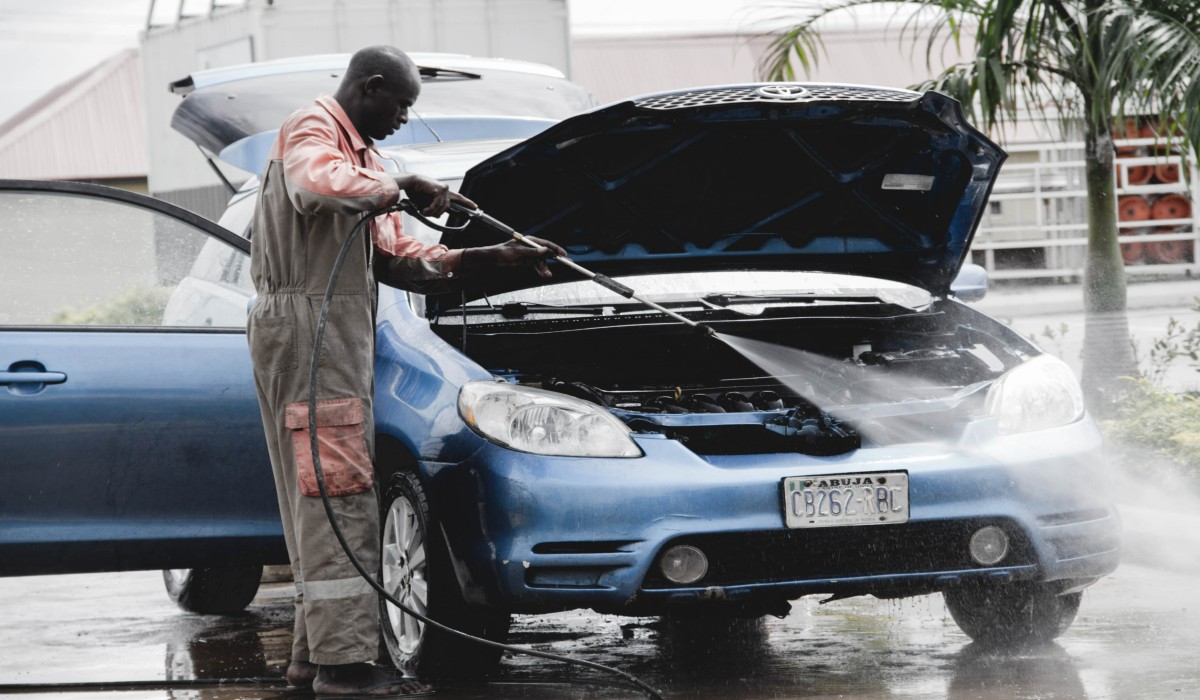Do You Know, how to car wash at home, Just as we take care of our bodies and make efforts to keep them clean and healthy for a longer life, our cars also need good maintenance to keep them clean and in good condition for a longer life.
There are so many reasons why our car gets dusty and dirty. It is important to keep your car clean from dust, as it makes it fast, smooth, and swift.
Regular car washing helps you protect yourself from grime, bird droppings, mud, and other destructive debris that leads to faded paint, scratches, and other problems.
Table of Contents
A few Tips on How To Car Wash at Home Recommendations
Tip 1: What Cleaning Tools Do You Need For Car Washing?
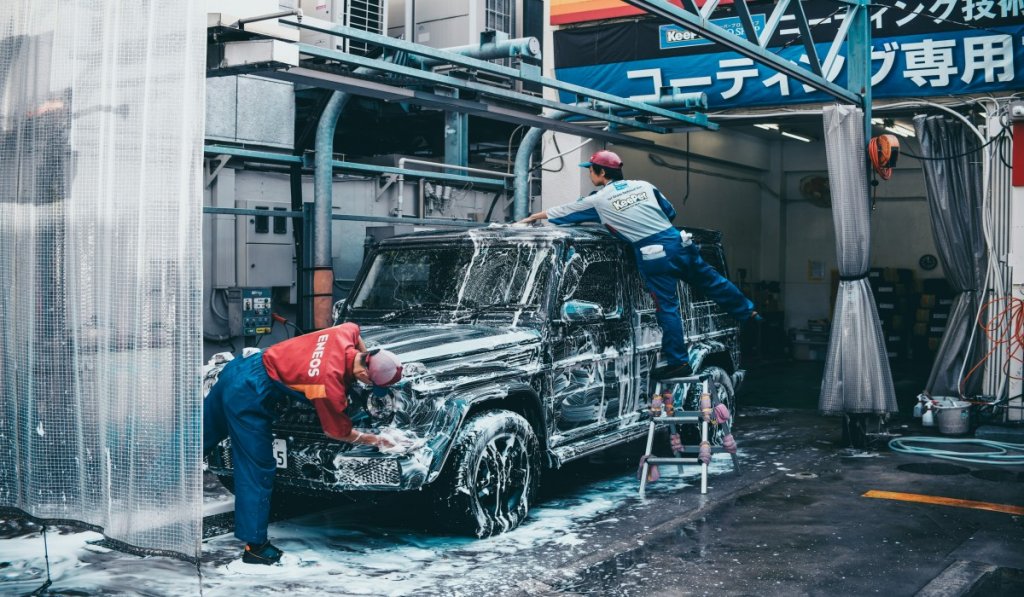
It’s critical to assess its state before washing it. This will assist you in figuring out the kinds of cleaning products you’ll require for the car wash.
- A hose with a variable nozzle.
- A gentle sponge or mitt for washing cars.
- Car wash solution.
- A number of microfiber clothes.
- For drying, use one or more large microfiber towels.
- Three buckets: one containing cleaning solution and water especially for your wheels, one containing dirty water, and one containing clean water.
Perhaps You also need
- Vacuum Cleaner for interior
- Wheel cleaner
- Rubber gloves
- Window cleaner
- Paper towels
Read the contents of any product you intend to use before applying it to your car. Certain car cleaning products are not universal and can harm other finishes, paint jobs, or coats.
While a newer car might have a strong clear coat that is still intact, an older car might require a cleaning regimen that includes clays, waxes, and polishes to protect the paint.
Tip 2: Where to wash your car
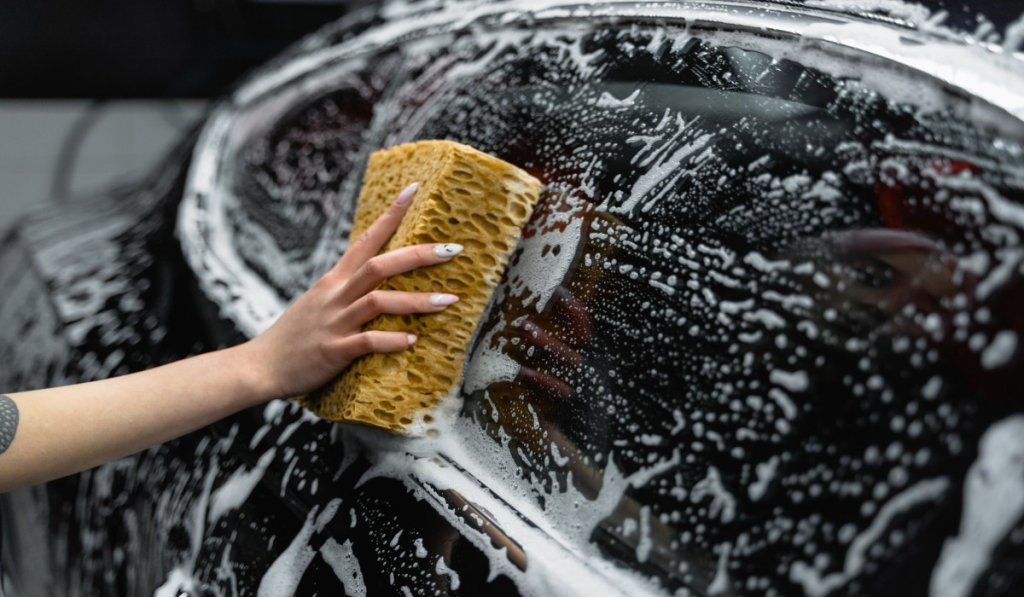
Although washing your car on a warm, sunny day may seem appealing, this is actually a very common mistake. Professional detailers generally agree that washing your car in the sun is not a good idea.
In the sun, water, soap, and cleaning supplies will dry quickly, leaving your paint and windows with swirl and spot marks. Rather, attempt to wash your car on a cool surface, with a spray bottle nearby, on a day that is a little cloudy.
To ensure that you have enough space to fully open your doors, you might also want to park your car somewhere level.
Tip 3: Wheel Cleaning-
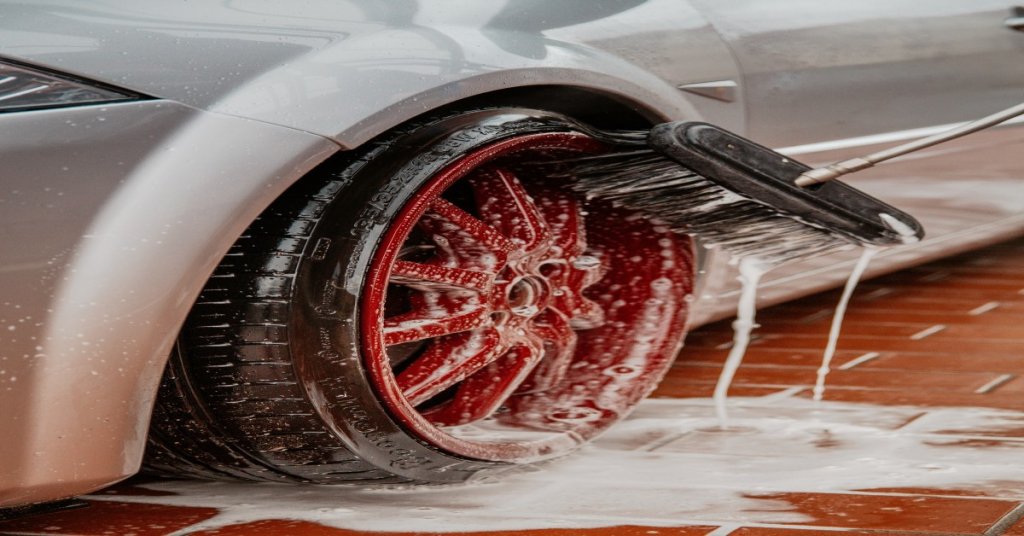
First and foremost, you should begin by cleaning your car’s wheels, which are typically the dirtiest area. Use a fresh bucket of water to wash each tire independently to prevent transferring dirt and grime to the paint of your car.
Before cleaning your wheels, get a tyre brush, a microfiber cloth, a separate sponge, and a tyre-specific cleaning solution. When it comes to car wheels, water-based, non-corrosive wheel cleaners are the safest option available.
They are advised for use on all kinds of car wheels. After that, you can apply your selected cleaning products to your wheels. After letting the solution settle, use a tire brush to remove any remaining dirt from your tires.
Lastly, give your wheels a final spray of cold, clean water to ensure that all of the cleaning solution has been removed. Make sure to dry the wheels with a fresh microfiber cloth after cleaning them.
Tip 4: Wash the Headlamps-
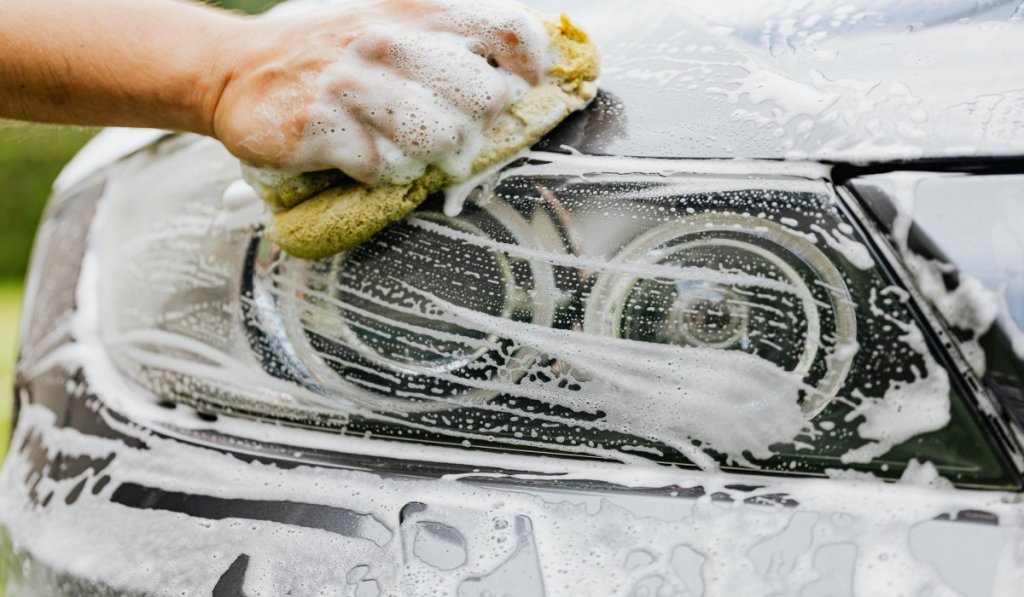
Don’t forget to clean your headlights too. Age-related yellowing of plastic headlights from dirt and sun damage reduces their effectiveness for driving and ruins the aesthetics of an otherwise immaculate vehicle.
Once you’re done, you can use a moist cloth to thoroughly clean your headlights after wiping them down with a cleaning solution. After washing, restore your headlights with a protective finish.
Tip 5: Clean the exterior of your car-
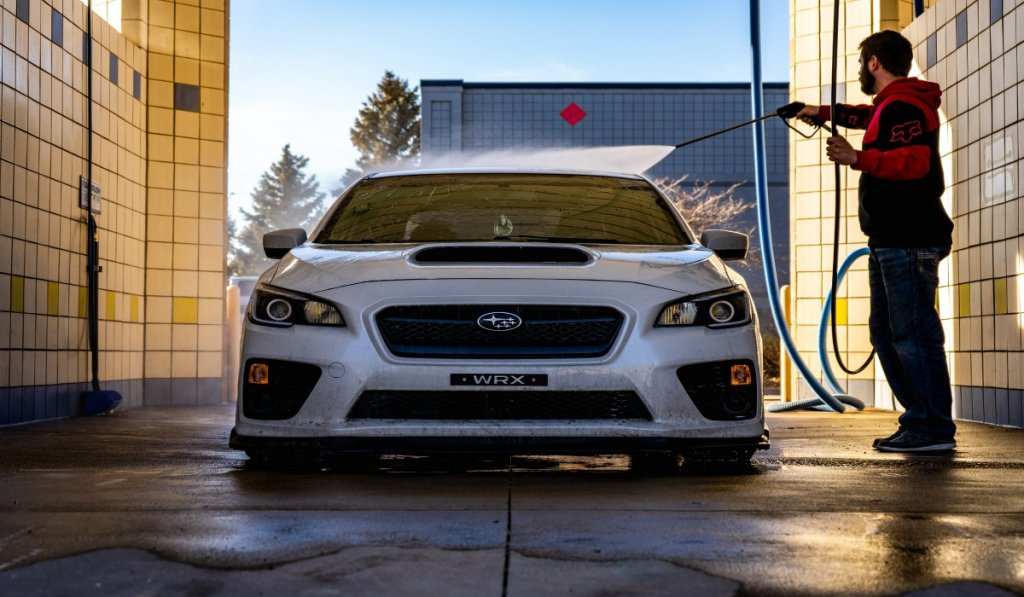
You can help get rid of any mud, dust, or dirt on your car by giving its body a wash. This will also aid in avoiding additional dings in the paint of your car.
Wash the car from top to bottom, making sure to get rid of any larger dirt particles. Recall to wash the car’s body with soapy water from your fresh bucket. It’s best to use a hose without a nozzle to rinse off the soapy water.
This kind of hose, known as the sheeting method, will permit water to gently flow from the top of the car down when it is under low pressure.
Before proceeding to the next step, you now use a large microfiber towel or chamois to dry off your car. Remember that prior to using any waxes or protective coatings, your car must be totally dry.
Tip 6: Cleaning Glass and Window-
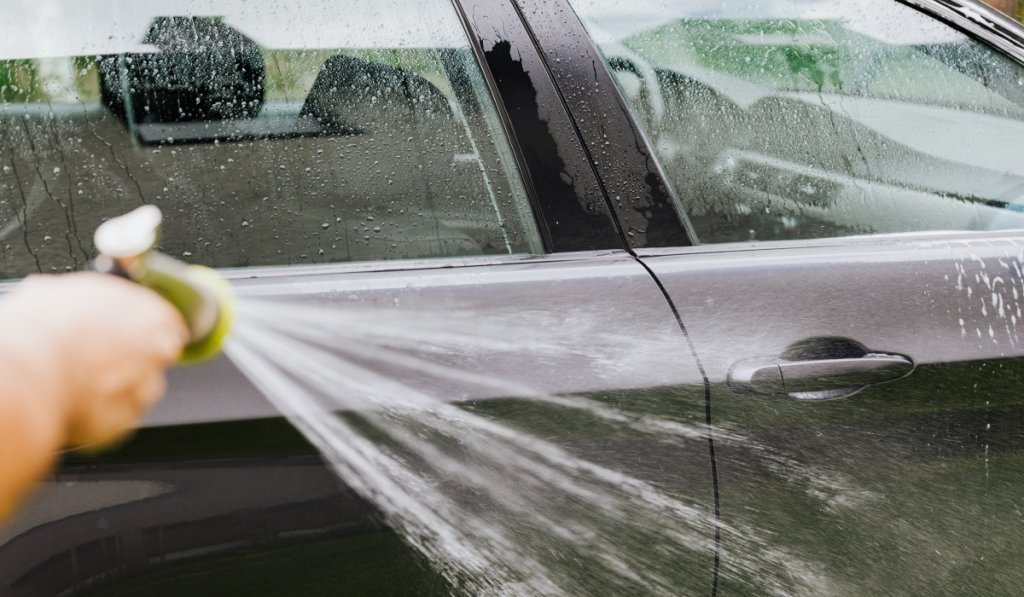
Not only will cleaning your car’s windows and glass produce a gleaming exterior, but it will also enable you to drive safely without squinting through the glass.
It’s crucial to remember that tinted glass and regular glass require different cleaning techniques. Instead of using products like Windex, which can be harsh on a car’s exterior window finish, you should use window cleaner designed specifically for car windows.
To prevent the cleaning product from dripping, it’s best to spray the solution directly onto the window surface and then wipe it off with a microfiber cloth. After that, you can carry out the same procedure inside your vehicle.
Tip 7: Cleaning the Interior-
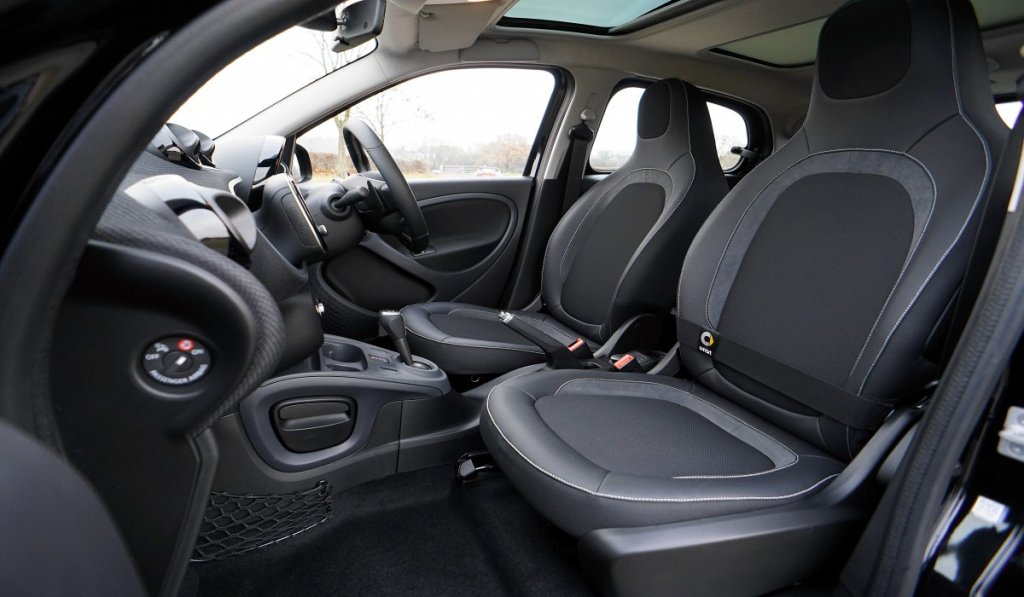
We are all aware of how difficult it can be to maintain a clean car interior, and having children or pets can make it easy to forget about doing so.
The Following Procedures Can Be Used To Clean The Interior of Your Car
- Remove all of the trash from the car, making sure to get it under the mats, on the seats, and on the floor.
- To remove any remaining dust or debris, shake your floor mats after removing them from the car. Before reinstalling them, you can give them a thorough cleaning with soap and hot water and let them air dry completely.
- The floor, the side door panels, the pedals, and the front and rear seats should all be vacuumed.
- Using a microfiber cloth or cleaning wipes, remove any remaining dirt, dust, and grime.
- A tiny amount of vehicle-specific cleaner can be sprayed on the console, the steering wheel, and the spaces between the seats.
- Use cleaning wipes or a cotton swab dipped in a cleaning solution to clean cup holders.
- Use a specialized cleaning solution to remove stains from the carpets and seats, and then use a moist cloth to wipe them clean.
- To reach those areas, you can use a paint stirrer that has been wrapped in a microfiber cloth at the end.
At The Last After Washing The Car Next Step is To Add Shine And Protection
- To prepare the surface: remove any prior wax application and suborn spots with a clay bar.
- Repair scratches: Apply a thin layer of wax to minor dings and scratches, or use a product designed specifically to fix deeper scratches.
- Polishing for added gloss: is an optional step that is highly recommended for anyone looking to give their car’s paint a high-gloss sheen that will make it appear like a mirror.
- Wax for protection: Wax applies a shielding layer that wards off UV rays and shields the car’s paint from any corrosive substances.

